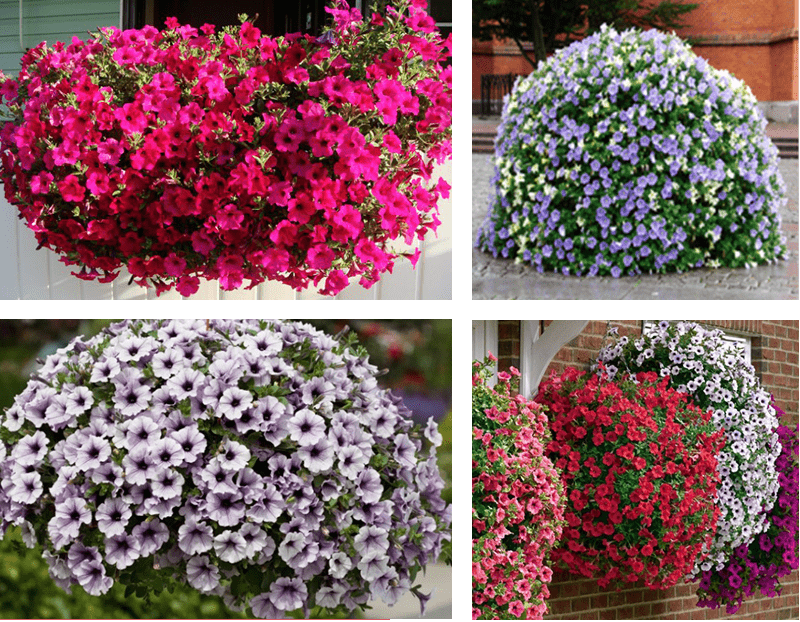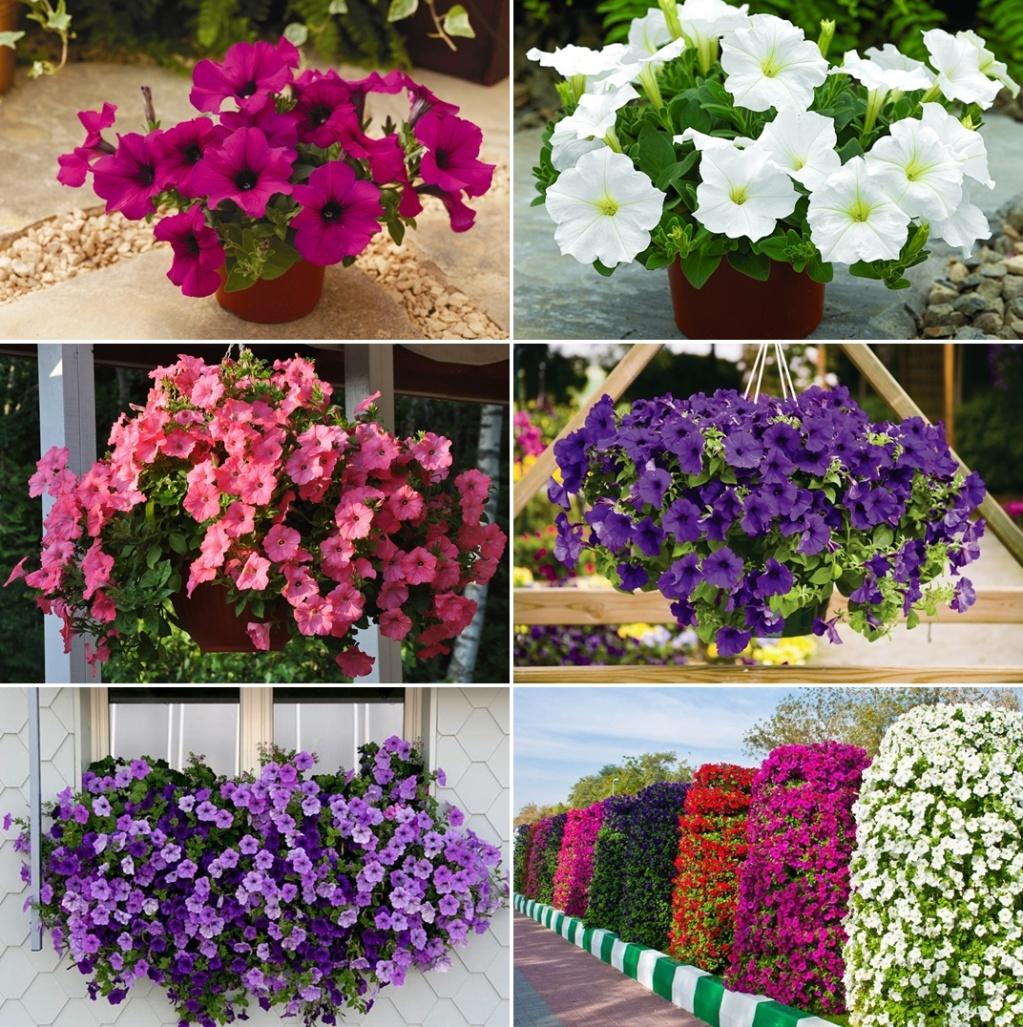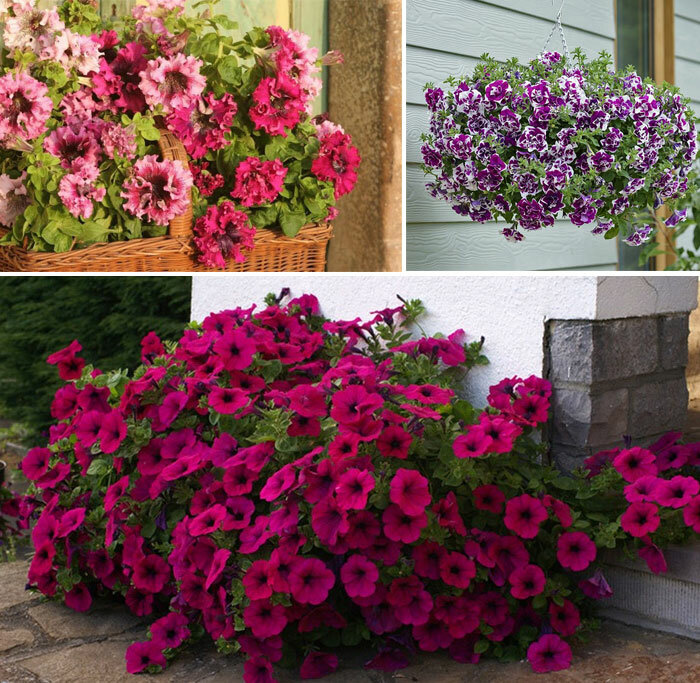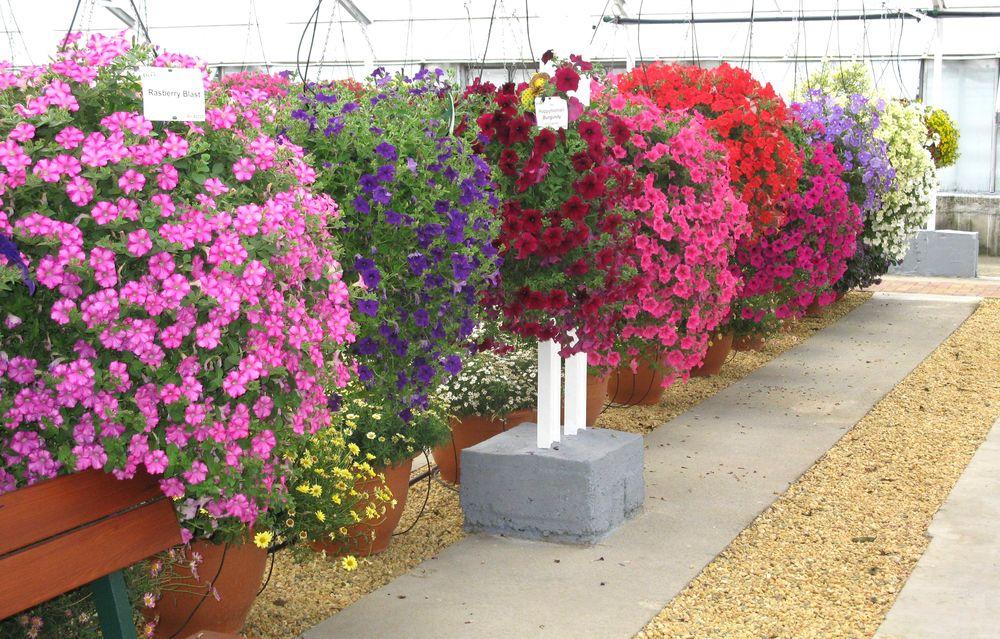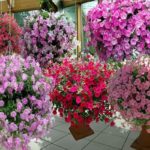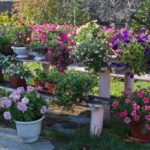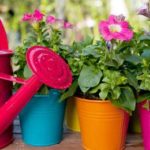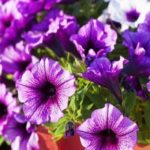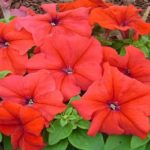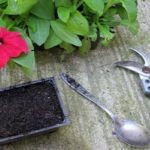Petunias are unusual and beautiful flowers that are found in almost every garden. They serve as decoration for any flower bed and can have a variety of shades of color - from white to dark purple. Recognizing the bush variety is not particularly difficult. However, the differences between ampelous and cascading petunias are not so obvious. The characteristic features of plants include the appearance of flowers, leaves, and shoots.
What is petunia
Petunia is a semi-shrub plant that belongs to the Solanaceae family.It is grown as a balcony flower and as an annual in gardens. The most popular varieties include hanging, cascading and bush. The last variety is different from the first two. It is characterized by straight shoots that point upward, like a bush.
At the same time, certain features are characteristic of the ampel and cascade varieties. The ampelous appearance is distinguished by the following characteristics:
- The inflorescences are shaped like bells. At the same time, dozens of flowers are located along each shoot. They are found in the axils of bushes.
- The palette can be different - from snow-white to purple. In this case, the inner part is usually darker than the petals.
- The stems vary in length. It can range from 30 to 100 centimeters.
- During development, the shoots fall to the ground rather than falling apart. Due to this, ampel varieties can be planted in hanging flowerpots. In this case, the formation of the crown is carried out at the discretion of the grower.
- Some varieties are characterized by large buds that reach 10 centimeters in diameter. In this case, a large number of flowers do not appear on the bushes. Other varieties have buds with a diameter of 3-7 centimeters. At the same time, there are 3-10 flowers on the sprouts.
Cascade petunia has its own distinctive features. These include the following:
- The plant is distinguished by elastic shoots of high strength. They do not break under gusts of wind. The length of each branch can reach 1.5 meters. A solid green mass appears from the sinuses. The growth of the stems begins upward, but at a certain height they bend downward.
- The crown in appearance resembles a ball, which is framed by a cascade of flowers.
- The buds grow up to 5 centimeters in diameter. Moreover, on one bush all the flowers are the same size.It is important to take into account that at the stage of flowering and bud formation, the bushes need to be watered and fed more often.
The benefits of this plant
The beneficial properties of petunia are associated with its amazing decorative properties. This flower has many benefits:
- a varied palette - this significantly expands the possibility of using plants in landscape design;
- Possibility of use for decorating flower beds and flowerpots;
- undemanding to growing conditions;
- possibility of combination with different plants on the site.
Key differences
The varieties of petunia under consideration are characterized by different features and traits. They relate to the thickness of the stems, the direction of growth, and the appearance of the flowers.
Stems thickness
Ampelous varieties are characterized by thin stems. Moreover, their length does not exceed 1.5 meters. Cascade varieties of petunia are characterized by thick and powerful shoots that can grow up to 2 meters.
Growth direction
Ampelous petunia is characterized by a downward direction of shoots. The cascade variety first grows upward, and then downwards and to the side.
Leaf size
Both types of petunias are characterized by soft leaves that are covered with a small fluff. At the same time, the old ones are larger, and the young ones are small. In hanging varieties, the size of the foliage changes during growth. As a result, it reaches 10 centimeters. In cascading varieties this figure usually does not exceed 5 centimeters.
Appearance of flowers
Ampelous petunia can be distinguished by single-color or two-color buds. Cascade varieties are more characterized by monochromatic inflorescences. At the same time, they bloom longer than the ampelous one.
Habitat
The natural habitat of these plants is located in the tropics of South America.From there, many representatives of the Solanaceae family spread to other continents, and various varieties of petunias are no exception.
At the same time, ampel and cascade varieties differ in their cultivation characteristics. It is recommended to plant hanging varieties in hanging flowerpots, while large floor vases are more suitable for cascading varieties.
What is better to plant
Choosing a specific option for planting on a site can be difficult. To get a good result, it is recommended to focus on the size of the area that needs to be enlivened with these colors. Ampelous petunia will fit perfectly into a large space. At the same time, on a tiny terrace it may seem tacky.
To decorate a small area in height, it is recommended to use a cascading petunia that climbs along a support. It won't take up much space. If the size allows, it is permissible to combine both types of crops. Thanks to this, you will be able to get a perfect flower arrangement.
When choosing a specific variety, the characteristics of their care are of great importance. Since ampelous and cascading petunias are not very different in origin, they require approximately the same care. However, in order to obtain beautiful and strong crops, a number of features still need to be taken into account.
A suitable period for transplanting ampelous petunia to a permanent site is considered to be the beginning or middle of June. It is also permissible to plant the plant in garden boxes or flowerpots. Culture will look good everywhere.
However, experts do not recommend planting petunia near other flowers. It grows quickly and leads to the suppression of other plants in the flowerbed. It is much better to give the plants a separate place. Thanks to this, they will cover everything around with a fragrant carpet.
Ampelous petunia is considered very demanding in terms of nutrients and watering. Great care is recommended at the beginning of flowering, when the buds are just beginning to bloom. At this moment, the flower is highly sensitive to the amount of moisture and the amount of nutrients.
It is important to avoid stagnation of moisture near the root system of ampelous petunia. As a result, there is a risk of rapid onset of rotting. This will entail the death of young shoots. With the right choice of fertilizer application and periodic watering, petunia will bloom from the beginning of June until frost.
Cascade petunia is characterized by specific care features. For comfortable growth, such bushes require a separate clearing. The fact is that such petunia tends to scatter lashes. As a result, a natural flower bed is formed, the diameter of which is 1.5-2 meters.
In addition, this type of petunia grows well, clinging to support. Its functions can be performed by a fence or pillar. But in this case, you will need to specifically direct the bush in the required direction so that the flowers do not climb on top of each other and do not hang down.
When planting cascading petunias, it is always recommended to monitor the distance between the bushes. It is important that it is at least 50 centimeters. Otherwise, the shoots will begin to choke each other. There will be too little space for them to grow and display their decorative properties. As a result, the bushes will lose their attractiveness.
If you plan to grow cascading petunia in pots, you need to use a larger container. For 1 shoot you should take at least 5 liters of soil. If you want to plant 2-3 plants in one pot at once, it is recommended to use a container with a volume of more than 15 liters.
In order for cascading petunia to have a beautiful shape and bloom profusely, it must be systematically plucked. However, this is prohibited with hanging varieties.
Conclusion
Ampelous and cascading varieties of petunias are distinguished by excellent decorative properties and are actively used in landscape design. They will harmoniously complement any space and will delight the eye for a long time. However, to get good results, it is important to choose the right plant variety and provide it with suitable care.

